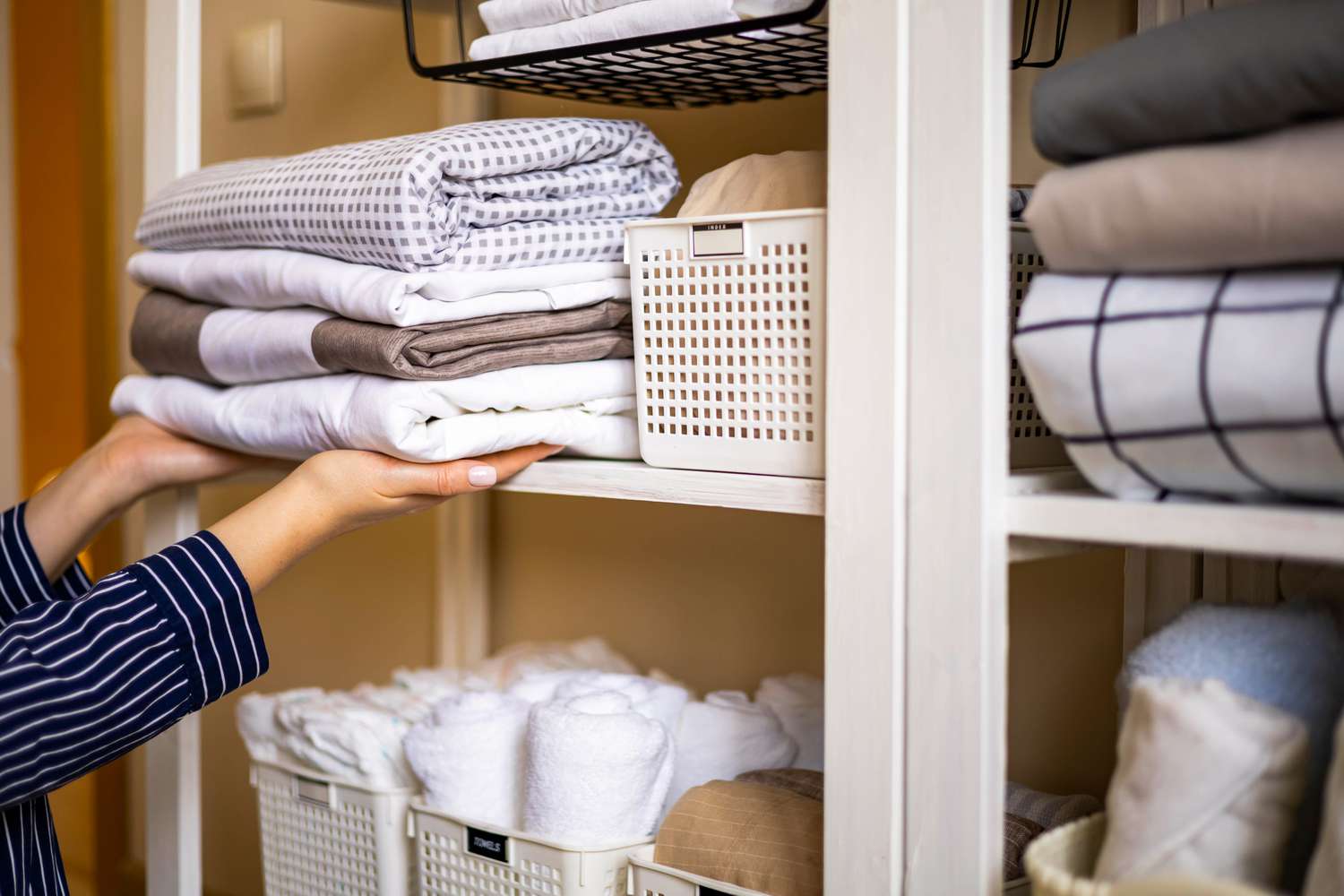

Articles
How To Store Sheet Sets
Modified: October 22, 2024
Learn the best way to store your sheet sets with our helpful articles. Keep your linens organized and wrinkle-free for longer lasting use.
(Many of the links in this article redirect to a specific reviewed product. Your purchase of these products through affiliate links helps to generate commission for Storables.com, at no extra cost. Learn more)
Introduction
Sheet sets are an essential part of our bedrooms, providing comfort, warmth, and a touch of style. Whether you have luxurious Egyptian cotton sheets or cozy flannel ones, properly storing them is crucial to maintain their quality and longevity. In this article, we will explore the importance of proper sheet storage and provide you with practical tips on how to store your sheet sets effectively.
Proper sheet storage not only keeps your sheets organized but also preserves their softness, color, and overall condition. When sheets are stored haphazardly or in inappropriate conditions, they can become wrinkled, faded, or even damaged. By implementing the right storage techniques, you can ensure that your sheet sets remain fresh, clean, and ready for use whenever you need them.
Gathering the necessary supplies beforehand is essential for efficient sheet storage. You will need a few basic items, including a clean and spacious storage area, such as a linen closet or wardrobe. You may also want to have some additional tools like labeler or marker, vacuum-sealed bags, pillowcases, and drawer dividers. These supplies will help you organize and protect your sheet sets and make it easier to find them when needed.
The first step in proper sheet storage is sorting and organizing. Start by separating your sheet sets based on size and type. For example, separate your queen-sized sheets from your king-sized sheets, or your cotton sheets from your satin sheets. This initial sorting will save you time when you are looking for a specific set.
Folding your sheet sets correctly is key to maintaining their neatness and preventing wrinkles. Different folding techniques can be used depending on the type of sheets and storage space available. For example, the flat sheet can be folded in half or rolled up, while the fitted sheet can be folded to create a compact square. Folding the pillowcases and stacking them neatly with the fitted and flat sheets will ensure a complete set is stored together.
Key Takeaways:
- Proper sheet storage is crucial for maintaining quality, freshness, and longevity. By following the steps and tips provided, you can ensure that your sheet sets remain organized, neat, and ready for use whenever needed.
- Utilizing various storage options such as folding sets together, using pillowcases as storage, vacuum-sealed bags, and drawer dividers allows for efficient organization and preservation of sheet sets. Labeling and identifying stored sheets further enhance accessibility and maintenance.
Read more: How To Store Nori Sheets
Why Proper Sheet Storage Is Important
Proper sheet storage is more than just a matter of tidiness. It plays a crucial role in maintaining the quality, longevity, and overall condition of your sheet sets. Here are a few reasons why proper sheet storage is important:
- Prolonging the lifespan of your sheets: Investing in high-quality sheet sets can be quite expensive. By storing them properly, you can extend their lifespan and get more use out of them. Wrinkled, faded, or damaged sheets may need to be replaced more frequently, thus incurring additional costs.
- Maintaining cleanliness: Storing your sheets properly helps to keep them clean and free from dust, allergens, and other elements that can accumulate over time. Clean and well-maintained sheets contribute to a healthier sleeping environment, especially for individuals with allergies or sensitivities.
- Preventing wrinkles and creases: Improper storage can lead to unsightly wrinkles and creases on your sheets. Folding them correctly and using appropriate storage techniques will minimize the chances of permanent fold lines and preserve the smoothness and appearance of your sheets.
- Facilitating easy access: When your sheet sets are stored properly, it becomes much easier to find and access them when needed. This saves you time and effort, especially during those moments when you need to quickly change your sheets or prepare for guests.
- Preserving colors and patterns: Sheets with vibrant colors or intricate patterns can add a touch of personality to your bedroom decor. However, improper storage can cause the colors to fade or bleed, diminishing the overall aesthetic appeal of your sheets. By storing them correctly, you can maintain the original vibrancy of the colors and patterns.
By understanding the importance of proper sheet storage and following these practical tips, you can ensure that your sheet sets remain in excellent condition for years to come. Not only will you extend their lifespan, but you will also enjoy the benefits of a clean, well-organized, and visually appealing bedroom.
Gather Your Supplies
Before you embark on the process of proper sheet storage, it’s important to gather all the necessary supplies. Having the right tools and materials will make the process easier and more efficient. Here are the essential supplies you’ll need:
- Clean and spacious storage area: Identify a suitable storage space for your sheet sets. This can be a dedicated linen closet, a wardrobe, or even a designated section of a shelf. Ensure that the area is clean, dry, and well-ventilated to maintain the freshness of your sheets.
- Sorting containers or bins: To organize your sheet sets, you’ll need containers or bins to separate them based on size and type. Clear plastic containers or fabric bins work well as they make it easier to see and access your sheets.
- Labeler or marker: To keep your sheet sets organized, consider labeling the containers or bins. This will help you quickly identify which sheets are inside without having to open each container.
- Vacuum-sealed bags: Vacuum-sealed bags are useful for compressing and storing sheet sets, particularly if you have limited storage space. These bags remove excess air, reducing the size of your sheets and protecting them from dust, moisture, and pests.
- Pillowcases: Pillowcases can serve as an alternative storage option for your sheet sets. By folding and tucking the entire set into a pillowcase, you can keep all the components together and easily identify the set when needed.
- Drawer dividers or bins: If you prefer to store your sheets in a drawer, consider using drawer dividers or bins. These help create compartments to separate and organize different sheet sets, preventing them from becoming tangled or mixed up.
Once you have gathered these supplies, you’ll be well-prepared to tackle the process of proper sheet storage. Having a clean and organized storage area, along with the necessary tools, will make it easier to maintain the quality and longevity of your sheet sets.
Step 1: Sorting and Organizing
In order to store your sheet sets effectively, it’s important to begin with sorting and organizing. This step will help you categorize your sheets and make it easier to locate specific sets when needed. Here’s how you can tackle this step:
- Separate by size: Start by separating your sheet sets based on size. For example, gather all your queen-sized sheets together and separate them from your king-sized or twin-sized sheets. This will help you quickly locate the correct size when it’s time to make the bed.
- Sort by type: Next, sort your sheets by type. Group together your cotton sheets, flannel sheets, satin sheets, or any other variations you may have. By organizing them this way, you’ll be able to easily find the material you prefer for different seasons or occasions.
- Consider color coordination: If you have multiple sheet sets in similar sizes and types, consider arranging them by color. This can make it easier to identify the specific set you want to use, especially if you enjoy switching up your bedroom decor frequently.
- Label containers: As you sort and organize your sheet sets, label the containers or bins in which you are storing them. You can use a labeler or simply write directly onto the containers with a marker. This will help you quickly identify the contents without needing to open each container.
- Store similar sets together: When placing your sheet sets in the storage area, try to keep similar sets together. This means storing the fitted sheet, flat sheet, and pillowcases of a set in close proximity to each other. Keeping complete sets together simplifies the process of making the bed and ensures that all components are readily available.
By following these sorting and organizing techniques, you’ll be able to quickly identify and access the specific sheet set you need. This step lays the foundation for a well-organized storage system, making it easier to maintain and preserve the quality of your sheets in the long run.
Step 2: Folding Techniques
Properly folding your sheet sets is key to maintaining their neatness and preventing wrinkles. Different folding techniques can be used depending on the type of sheets and the storage space available. Follow these steps to effectively fold your sheet sets:
- Flat Sheets: Lay the flat sheet flat on a clean surface, such as a bed or table. Smooth out any creases or wrinkles. Fold the sheet lengthwise in half, matching up the edges. Smooth out any additional wrinkles as you fold. Fold the sheet lengthwise again, bringing the top edge to meet the bottom edge. Fold the sheet in half or thirds, depending on the size of the sheet and the storage space available. Ensure that the sheet is folded neatly and the edges align.
- Fitted Sheets: Lay the fitted sheet on a clean surface. Identify the corners with the elasticized edges. Take one corner and tuck it into another corner, creating a pocket-like shape. Repeat with the remaining corners. Smooth out any wrinkles or uneven edges. Fold the sheet in half or thirds, depending on the size of the sheet and the storage space available. Make sure the elastic edges are tucked inside the folds for a clean and compact appearance.
- Pillowcases: If you are storing your sheet sets folded inside a pillowcase, start by laying the pillowcase flat on a surface. Fold the pillowcase in half lengthwise, bringing the bottom edge to meet the top edge. Smooth out any wrinkles or creases. Place the folded sheets inside the pillowcase, ensuring that all components are neatly aligned. Fold the pillowcase in half again, enclosing the sheets completely. You can also label or mark the pillowcase to easily identify the set.
Remember to handle your sheets with clean hands to avoid transferring dirt or oils. Smooth out any wrinkles or creases as you fold, ensuring that the sheets are neatly and uniformly folded. Keep in mind that the specific folding techniques may vary depending on the size and material of your sheets.
By following these folding techniques, your sheet sets will remain neat and wrinkle-free. When it comes time to use them, you’ll be able to unfold them effortlessly and enjoy the comfort and cleanliness that well-folded sheets provide.
Read more: How To Store Baking Sheets
Step 3: Storage Options
Once you have sorted, organized, and folded your sheet sets, it’s time to choose the right storage options that suit your needs and available space. Here are several storage options to consider:
Option 1: Folding Sets Together: A simple and effective way to store your sheet sets is by folding them together. Stack the folded sets neatly on a shelf or in a designated area in your linen closet. This method allows you to easily access the entire set when needed.
Option 2: Using Pillowcases as Storage: An alternative storage solution is to use pillowcases as storage containers for your sheet sets. Fold the sheets and pillowcases together, and then place them inside one of the pillowcases. This keeps the components of the sheet set together and makes it easy to identify the set at a glance.
Option 3: Vacuum-Sealed Bags: If storage space is limited or if you want to protect your sheets from moisture, dust, or pests, consider using vacuum-sealed bags. Place the folded sheet sets inside the bag, remove the excess air using a vacuum cleaner, and seal the bag tightly. This method compresses the sheets, reducing their size and providing extra protection.
Option 4: Drawer Dividers or Bins: If you prefer to store your sheet sets in drawers, consider using drawer dividers or bins. These tools help create compartments, keeping each sheet set separate and organized. Labeling the dividers or bins can further enhance the ease of finding the right set.
When choosing your storage method, consider factors such as the size of your sheet sets, the available storage space, and your personal preferences. It’s important to select a storage option that keeps your sheets clean, easily accessible, and protected from potential damage.
Ensure that your chosen storage area is clean, dry, and well-ventilated, as excessive moisture and humidity can cause mildew or musty odors. Avoid storing sheets in direct sunlight, as it can lead to fading or discoloration over time.
By selecting the appropriate storage option, you can maintain the organization and condition of your sheet sets, making it easier to find and enjoy them whenever you need a fresh set of sheets for your bed.
Option 1: Folding Sets Together
One common and effective storage option for your sheet sets is to fold them together as a complete set. This method helps to keep all the components of the set in one place, making it convenient to find and use them. Here’s how you can implement this storage option:
- Fold the flat sheet: Start by folding the flat sheet according to the folding technique mentioned earlier. Make sure to fold it neatly and uniformly. Smooth out any wrinkles or creases as you go. This will ensure that the flat sheet stays in excellent condition during storage.
- Fold the fitted sheet: Once the flat sheet is folded, proceed to fold the fitted sheet. Use the method specified in the folding techniques section. Remember to tuck the elastic edges inside the folds to maintain a neat and tidy appearance. Smooth out any wrinkles or uneven edges as you fold.
- Fold the pillowcases: Lastly, fold the pillowcases and stack them neatly on top of the folded flat and fitted sheets. Ensure that the pillowcases are smoothed out and free from wrinkles. You may want to consider folding the pillowcases together to keep them as a set.
- Place the folded set together: Once all the components are folded, place the folded set together on a shelf or in a designated storage area. Stack them neatly, making sure that the folded edges align. If available, consider using dividers or separators to keep different sets separate and organized.
Labeling the stacks or using color-coded tags can help you quickly identify the desired sheet set. This is especially useful if you have multiple similar sets or if you frequently rotate your sheet sets based on seasons or preferences.
Choosing this storage option allows you to easily retrieve a complete sheet set when it’s time to change your bedding. It eliminates the need to search for individual components and ensures that all the necessary pieces are readily available in one place.
Remember to handle the folded sets with clean hands to avoid transferring any dirt or oils onto the sheets. With proper folding and storage, your sheet sets will remain organized, neat, and ready for use whenever you want to freshen up your bedroom.
To store sheet sets, fold the fitted sheet, flat sheet, and pillowcases together and place them inside one of the pillowcases from the set. This keeps everything together and makes it easy to grab and go when needed.
Option 2: Using Pillowcases as Storage
Another practical storage option for your sheet sets is to utilize pillowcases as storage containers. This method allows you to keep all the components of a set together in a compact and organized manner. Here’s how you can implement this storage option:
- Fold the sheets: Begin by folding the flat and fitted sheets using the folding techniques described earlier. Ensure that they are neatly folded and free from wrinkles. Smooth out any creases or uneven edges as you go. Folding the sheets properly will help maintain their quality during storage.
- Place the folded sheets inside a pillowcase: Once the sheets are folded, place them inside one of the pillowcases. Start with the flat sheet, followed by the fitted sheet. For added convenience, you can also include the pillowcases of the set. Smooth out any wrinkles and make sure the components are aligned neatly within the pillowcase.
- Secure the pillowcase: Once all the components are inside the pillowcase, you can secure it in a few different ways. You can fold the open end of the pillowcase over to close it, similar to how you would fold a traditional pillowcase. Alternatively, you can tie a ribbon or use a rubber band to secure the opening, preventing the contents from slipping out.
- Label the pillowcase: To easily identify the set, consider labeling the pillowcase. You can use a labeler or write directly on the case using a fabric marker or pen. Include information such as the size, material, or color of the sheets to quickly locate the desired set when needed.
Storing your sheet sets within pillowcases keeps all the components together and eliminates the need for separate storage containers. It also allows for easy identification, as you can quickly see which set is stored in each pillowcase without having to open each one.
You can stack the pillowcases on a shelf or in a designated storage area. Make sure to keep them in a clean and dry space to maintain their freshness. Avoid storing them in direct sunlight, as this can lead to fading or discoloration over time.
This storage option is particularly beneficial if you have limited storage space or if you frequently rotate your sheet sets. It not only keeps the sets organized but also prevents them from getting tangled or separated from their components.
By using pillowcases as storage containers, you can efficiently organize and preserve your sheet sets while adding a touch of creativity to your storage solution.
Option 3: Vacuum-Sealed Bags
Vacuum-sealed bags are an excellent option for storing sheet sets, especially if you are looking to save space and protect your sheets from dust, moisture, and pests. This storage method compresses the sheets, reducing their size and providing an airtight seal. Here’s how you can use vacuum-sealed bags to store your sheet sets:
- Fold the sheet sets: Begin by folding your sheet sets using the folding techniques mentioned earlier. Make sure the sheets are neatly folded and free from wrinkles. Smooth out any creases as you go to ensure a tidy appearance.
- Place the folded sheets inside the bag: Once folded, place the sheet sets inside the vacuum-sealed bag. Depending on the size of the bag and the volume of the sheets, you may be able to fit multiple sets into one bag. Take care not to overstuff the bag, as this may make it difficult to seal properly.
- Remove excess air and seal the bag: Before sealing the bag, use a vacuum cleaner with a hose attachment to remove the excess air. Place the hose over the designated valve on the bag and switch on the vacuum cleaner. The air will be extracted from the bag, causing it to compress around the sheets. Once the air is removed, quickly seal the bag tightly to maintain the vacuum seal.
- Store the sealed bags in a suitable location: Once sealed, store the vacuum-sealed bags in a clean, dry, and cool storage area. It’s best to keep them away from direct sunlight and extreme temperatures. Consider stacking the bags or placing them in a designated storage container to keep them organized.
- Label the bags: To easily identify the contents, label each vacuum-sealed bag with information such as the size, material, or color of the sheet sets stored inside. This will save you time when searching for a specific set later on.
Vacuum-sealed bags not only help maximize storage space but also provide extra protection for your sheets. By removing the excess air and sealing the bags tightly, you create a barrier against dust, pests, and moisture, which can potentially damage your sheets.
When you need to retrieve a sheet set, simply open the sealed bag and allow the sheets to regain their shape. They will quickly expand and be ready for use. Remember to store the unused bags in a sealed condition to maintain their protective properties.
Using vacuum-sealed bags is especially beneficial if you have limited storage space, need to store seasonal sheet sets, or want to keep your sheets in pristine condition until they are needed.
With this storage option, you can efficiently store and protect your sheet sets, maximizing their longevity and ensuring they are always clean and ready for use.
Read more: How To Store Sheets And Blankets
Option 4: Drawer Dividers or Bins
If you prefer to store your sheet sets in drawers, utilizing drawer dividers or bins is an excellent option. These tools help create compartments, keeping each sheet set separate and organized. Here’s how you can implement this storage option:
- Measure your drawer: Start by measuring the dimensions of your drawer to determine the appropriate size of dividers or bins that will fit comfortably inside.
- Choose drawer dividers or bins: Depending on your preference and the size of your drawer, select either drawer dividers or bins. Dividers are typically adjustable and can be resized to fit your specific needs, while bins are usually available in standard sizes and can be stacked or nested inside the drawer.
- Arrange the dividers or bins: Place the dividers or bins inside the drawer, creating separate compartments for each sheet set. If using dividers, adjust them according to the dimensions of your sheet sets. If using bins, place them side by side or stack them vertically, depending on the available space and number of sheet sets you have.
- Fold and place the sheet sets: Fold your sheet sets using the folding techniques discussed earlier. Neatly place each set into a separate compartment. Ensure that the folded edges align and the sheets are smooth and free from wrinkles. If using bins, label or mark each bin to easily identify the sheet set stored inside.
- Close the drawer: Once all the sheet sets are placed inside their respective compartments, close the drawer. Make sure it moves smoothly and that nothing is obstructing its closure. This will ensure that the sheet sets are protected and organized until they are ready to be used.
Drawer dividers or bins are excellent storage options for those who prefer a clean and organized look. They keep each sheet set separate, making it easy to locate and access them when needed. Additionally, they prevent the sheets from becoming tangled or mixed up, saving you the hassle of untangling them when it’s time to change your bedding.
Labeling the dividers or bins can enhance the organization further. You can use labels or tags to indicate the size, material, or color of the sheet sets stored in each compartment. This makes it even easier to find the desired set at a glance.
With the help of drawer dividers or bins, you can neatly arrange and protect your sheet sets in your dresser or wardrobe, ensuring that they remain in excellent condition and are readily accessible whenever you need to change your bedding.
Step 4: Labeling and Identifying
Labeling and identifying your stored sheet sets is an important step in maintaining an organized and efficient storage system. By properly labeling your sheets, you can quickly locate the desired set without having to open each container or bag. Follow these steps to effectively label and identify your stored sheet sets:
- Choose a labeling method: Decide on a labeling method that suits your preference and storage containers. Options include using sticky labels, adhesive tags, or permanent markers directly on the containers or bags.
- Include key information: When labeling your sheet sets, include key information that will help you easily identify them. This information may include the size (e.g., queen, king), material (e.g., cotton, flannel), color or pattern, or any specific details that differentiate the sets.
- Consistency in labeling: Maintain consistency in your labeling approach to ensure clarity and easy identification. Use the same format and font size for all labels to create a uniform look.
- Attach labels or write directly: Depending on the labeling method you choose, attach the labels or write directly on the storage containers or bags. If using adhesive labels or tags, make sure they are securely attached. If using a permanent marker, ensure the writing is clear and legible.
- Place labels in visible locations: Position the labels or writing in a visible location on each storage container or bag. This allows you to quickly scan and find the desired set without having to search extensively.
- Update labels as needed: Over time, you may acquire new sheet sets or remove old ones. It’s important to update the labels accordingly, either by creating new labels or modifying existing ones. This ensures that your storage system remains accurate and up to date.
Labeling and identifying your stored sheet sets not only saves you time but also helps maintain the organization and efficiency of your storage space. It eliminates the need to open each container or bag to find the desired set, preventing unnecessary handling and potential disturbance to the other sets.
Furthermore, clear labeling allows other household members or guests to easily identify and locate the appropriate sheet sets, promoting a seamless and hassle-free experience for everyone.
By taking the time to label and identify your stored sheet sets, you can ensure that your storage system remains organized, efficient, and easily navigable, making the process of finding the right sheets a breeze.
Step 5: Tips for Maintenance and Care
Proper maintenance and care are essential in preserving the quality and longevity of your sheet sets. By following these tips, you can ensure that your sheets remain fresh, clean, and comfortable for years to come:
- Wash before storing: It’s crucial to wash your sheets before storing them, even if they appear clean. This removes any lingering dirt, oils, or odors, preventing them from settling into the fabric during storage.
- Ensure sheets are completely dry: Before folding and storing your sheets, ensure they are completely dry. Moisture can lead to mold, mildew, or musty odors. If necessary, hang the sheets outside or use a dryer to thoroughly dry them.
- Store clean sheets: Always store clean sheets to prevent any stains or odors from setting in during storage. Avoid storing dirty or soiled sheets, as they can attract pests or develop unpleasant odors over time.
- Use natural pest deterrents: To deter pests such as moths and silverfish, consider using natural pest deterrents like lavender sachets, cedar chips, or dried lemon peels. These can help protect your sheets from potential damage while in storage.
- Avoid using scented products: While it may be tempting to use scented products or fabric sprays on your sheets, it’s advisable to avoid them. The chemicals and fragrances in these products can potentially irritate sensitive skin or leave behind residue that affects the fabric over time.
- Regularly rotate sheet sets: If you have multiple sheet sets, aim to rotate them regularly. This helps prevent one set from being constantly used, prolonging the overall lifespan of your sheets.
- Avoid direct sunlight: Direct exposure to sunlight can cause fading and discoloration in your sheets. When storing or airing out your sheets, choose a shaded area to prevent any damage from prolonged sun exposure.
- Check for pest infestations: Periodically inspect your stored sheets for signs of pest infestation, such as holes or droppings. If you suspect any pest activity, take necessary steps to address the issue promptly to prevent further damage.
- Monitor and adjust storage conditions: Maintain a clean, dry, and well-ventilated storage area for your sheets. Monitor the temperature and humidity levels periodically and make adjustments as needed to ensure optimal conditions for storing your sheet sets.
- Replace worn-out sheets: Over time, sheets may become worn-out or develop irreparable damage. It’s important to periodically assess the condition of your sheets and replace them when necessary. This ensures that you always have high-quality, comfortable sheets for a restful sleep.
By following these maintenance and care tips, you can ensure that your sheet sets remain in excellent condition and provide you with a comfortable and relaxing sleep experience. Proper care and attention will prolong the life of your sheets, allowing you to enjoy their softness and quality for years to come.
Conclusion
Properly storing your sheet sets is essential for maintaining their quality, freshness, and overall condition. By following the steps outlined in this article and implementing the suggested storage options, you can keep your sheets organized, neat, and ready for use whenever you need them.
We discussed the importance of proper sheet storage, as it prolongs the lifespan of your sheets, maintains cleanliness, prevents wrinkles and creases, facilitates easy access, and preserves the colors and patterns. By investing a little time and effort into storing your sheets properly, you can enjoy the many benefits they offer for a long time.
Gathering the necessary supplies such as a clean storage area, sorting containers, labeling tools, vacuum-sealed bags, pillowcases, and drawer dividers is crucial for effective sheet storage. Sorting and organizing your sheets by size and type ensures easy identification, while folding techniques maintain their neatness and prevent wrinkles.
We explored various storage options, including folding sets together, using pillowcases as storage, utilizing vacuum-sealed bags, and employing drawer dividers or bins. Each option offers unique advantages, allowing you to choose the method that suits your storage space and preferences.
Labeling and identifying your stored sheet sets helps in quickly finding the desired set without the need to open each container or bag. Updating labels and maintaining consistency ensure an organized and efficient storage system.
Lastly, we provided tips for maintenance and care, including washing before storage, ensuring the sheets are completely dry, using natural pest deterrents, avoiding scented products, rotating sheet sets, and monitoring storage conditions. These tips will help in preserving the quality and longevity of your sheet sets.
In conclusion, by following the steps and tips outlined in this article, you can ensure that your sheet sets remain in excellent condition, providing comfort and style for years to come. Proper sheet storage not only keeps your sheets organized but also allows you to maintain their freshness, cleanliness, and overall appeal. So, take the time to implement these practices and transform your sheet storage into an organized and efficient system.
Frequently Asked Questions about How To Store Sheet Sets
Was this page helpful?
At Storables.com, we guarantee accurate and reliable information. Our content, validated by Expert Board Contributors, is crafted following stringent Editorial Policies. We're committed to providing you with well-researched, expert-backed insights for all your informational needs.

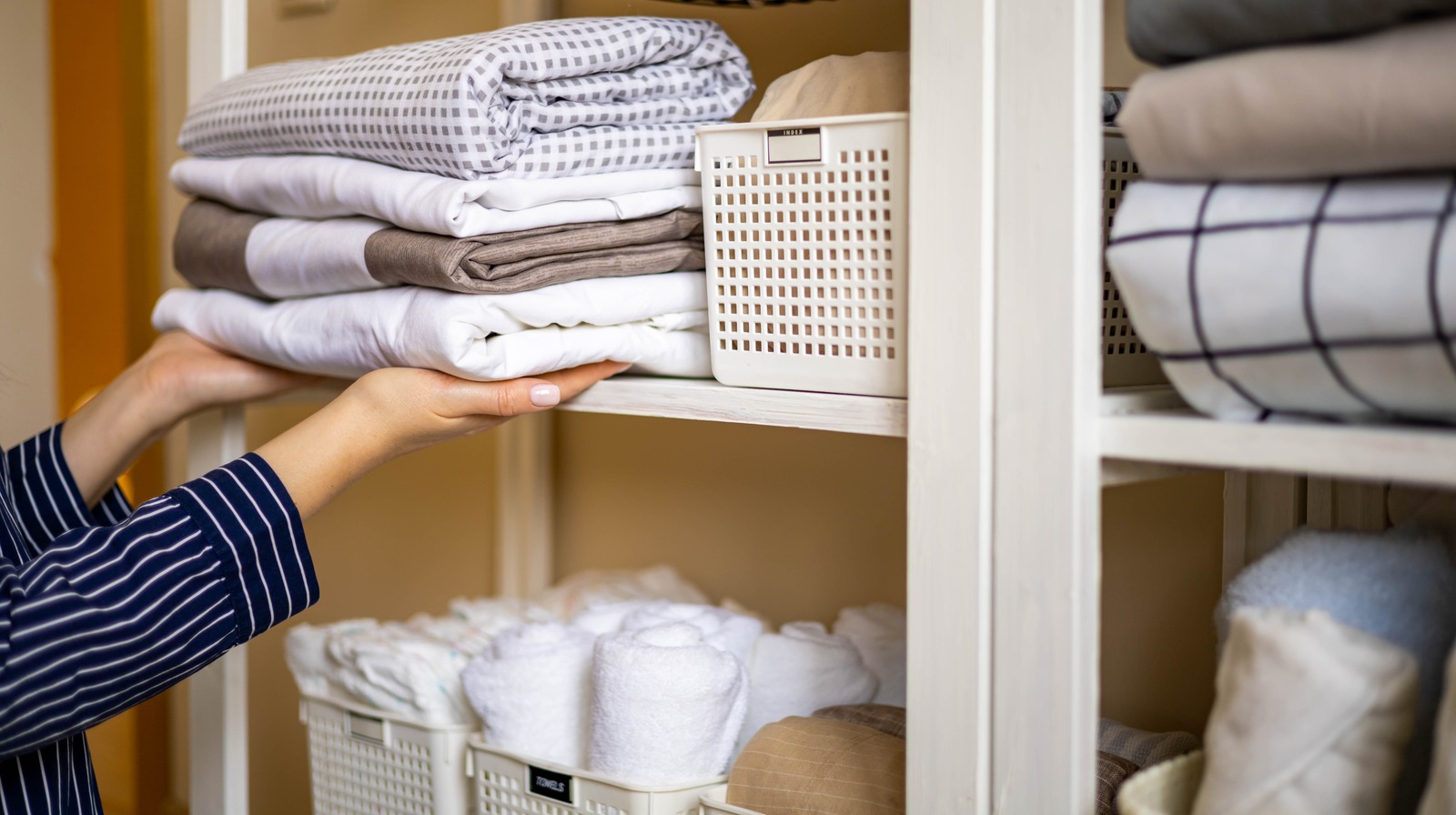


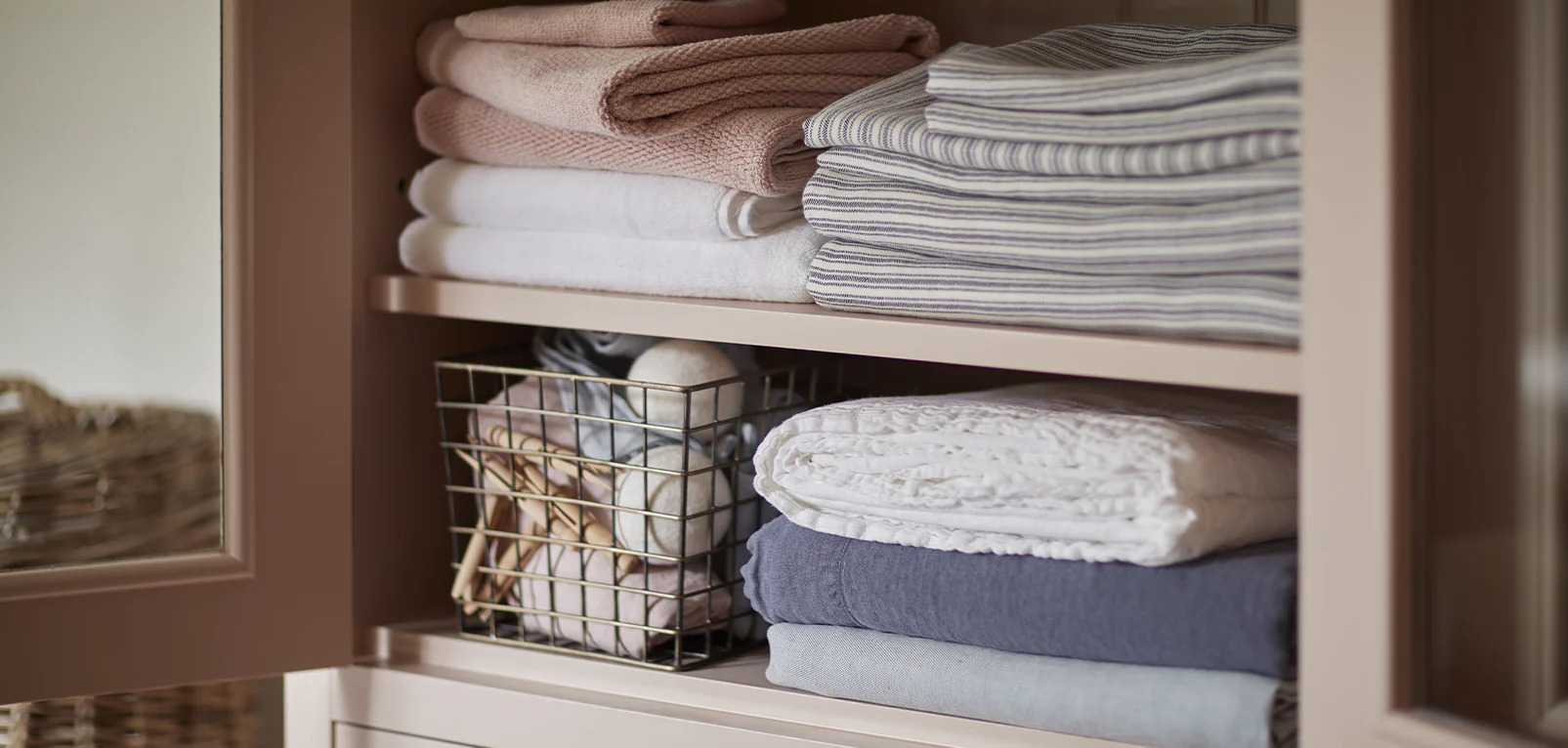
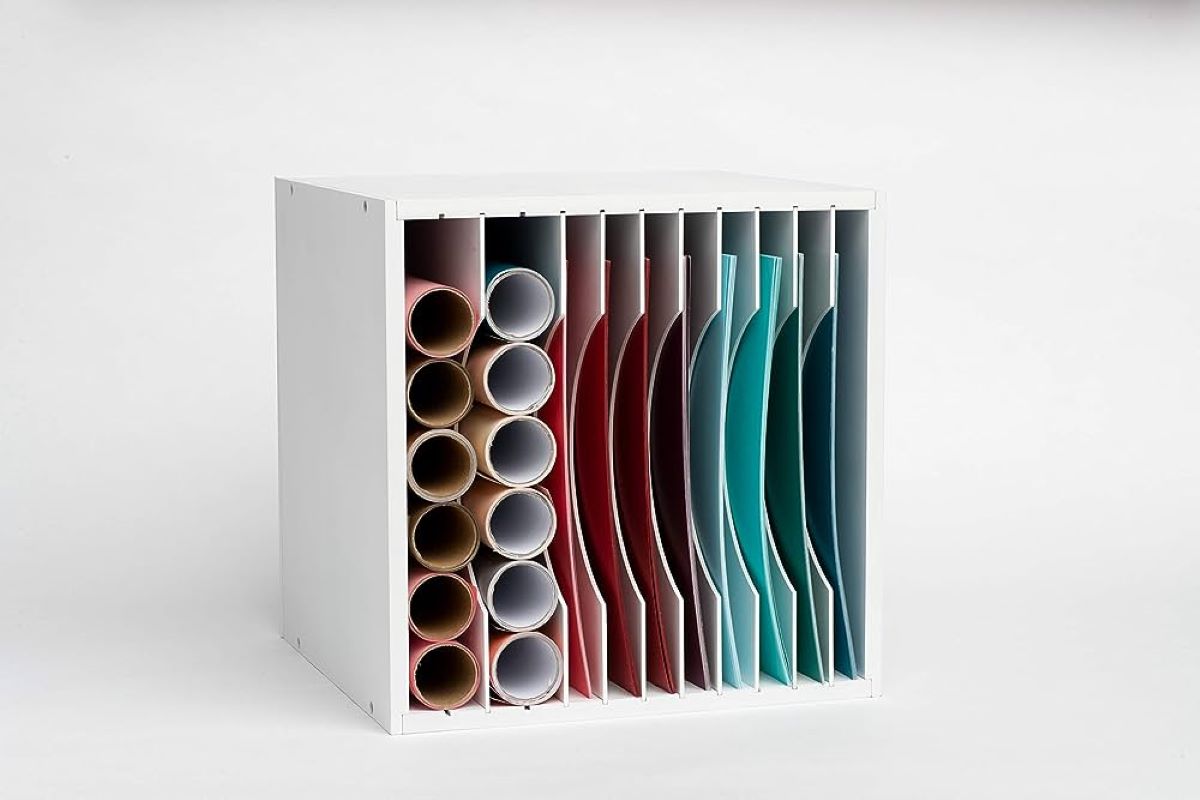

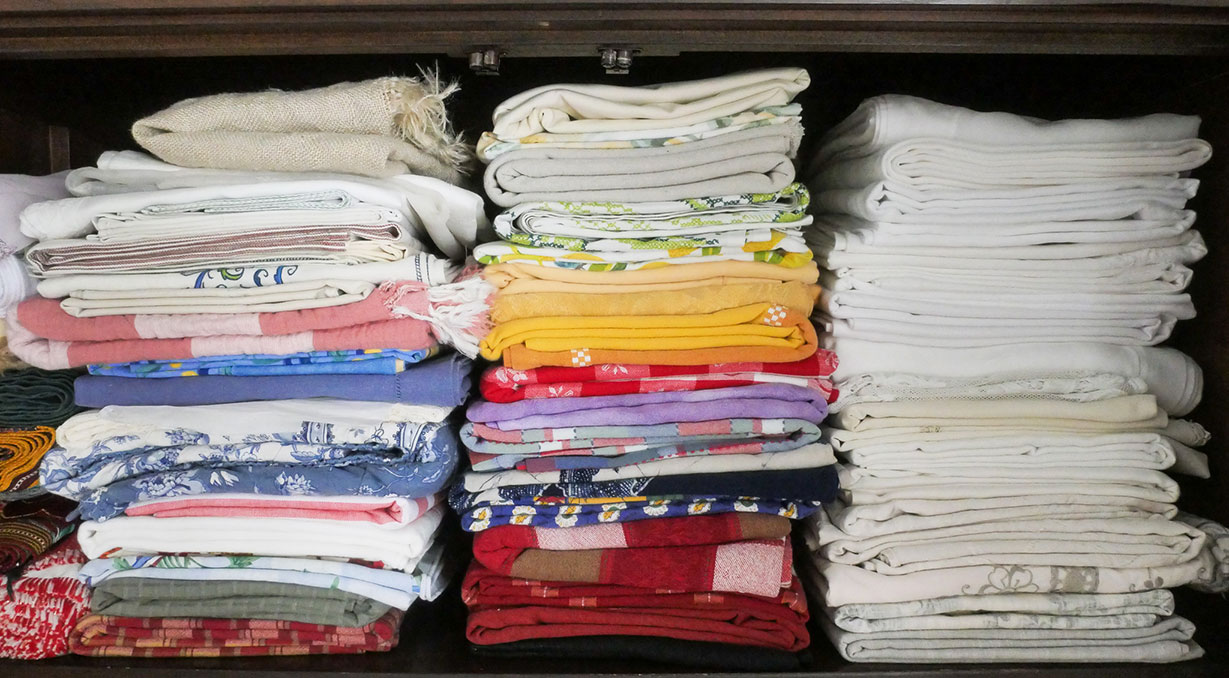


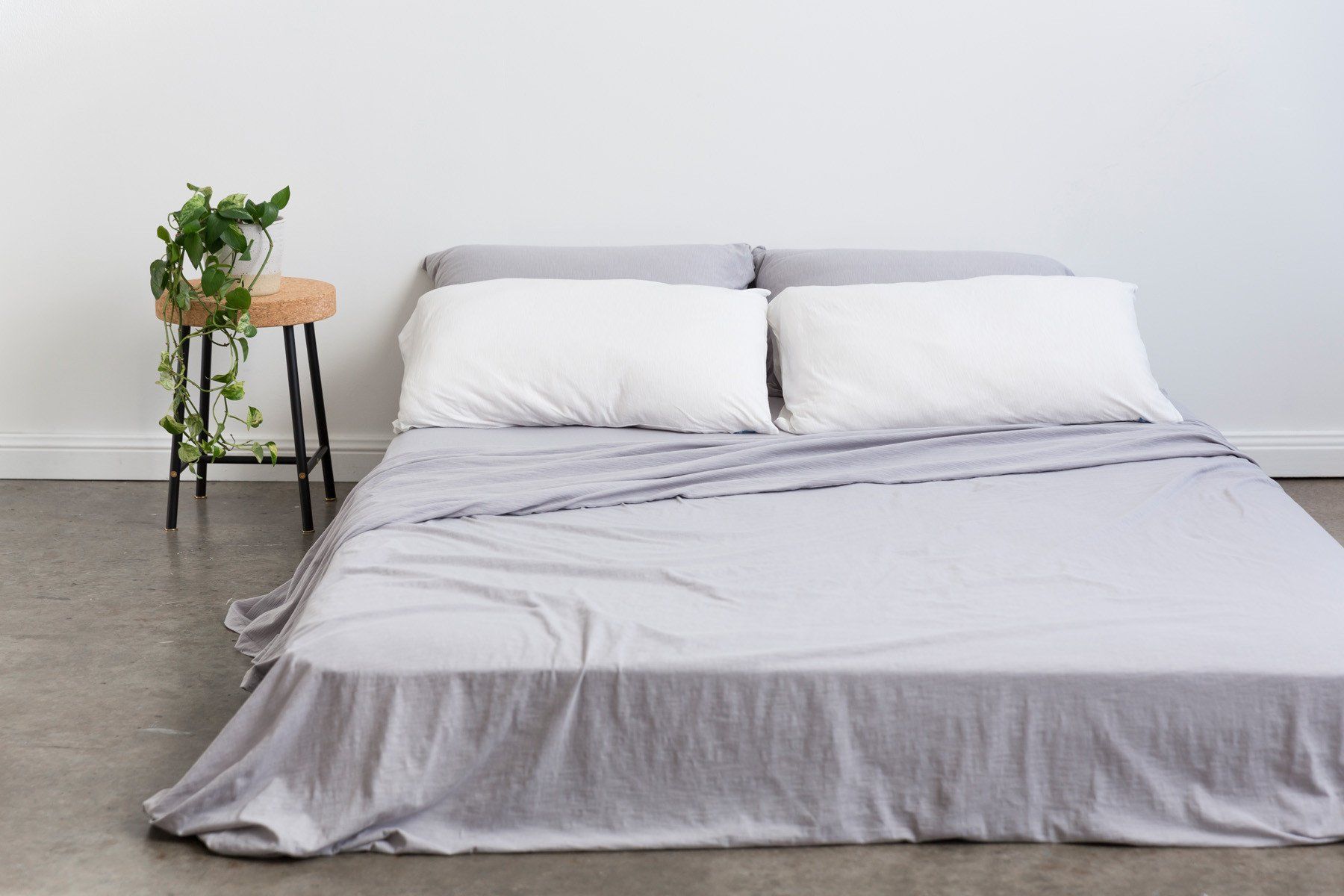
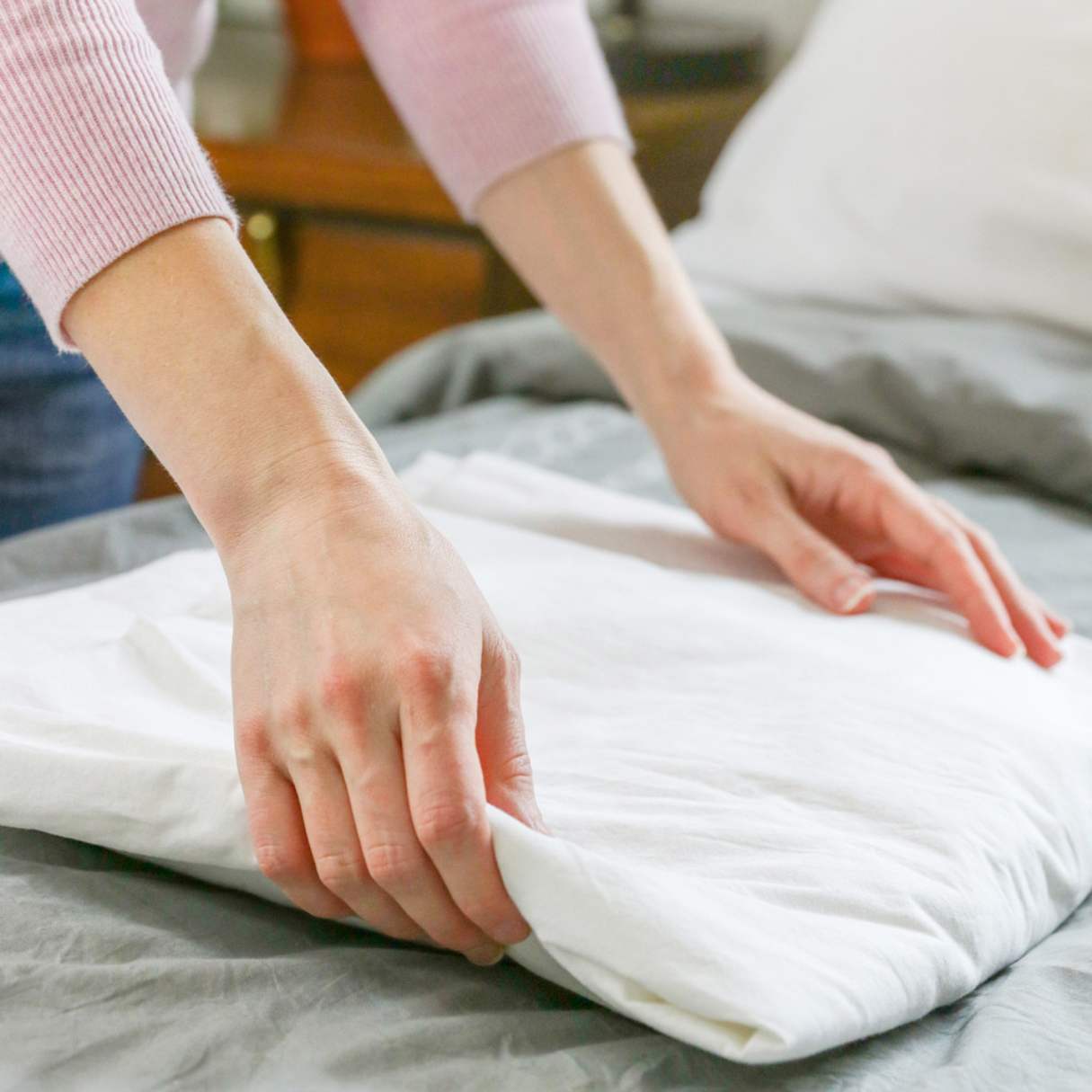


0 thoughts on “How To Store Sheet Sets”